by Ray Linville
What’s the most important ingredient in macaroni and cheese? Except for the love that the preparer personally adds, is one item more important than anything else?
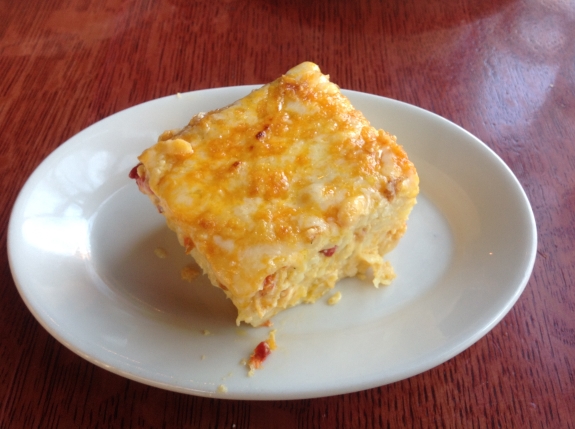
The questions may seem frivolous because today the recipe at home can be quite simple – unless you’re Thomas Jefferson, who was so consumed with serving the perfect macaroni that he bought a pasta-making machine in Europe. For his baked macaroni dish, he also imported cheese from France. Too bad that he probably didn’t know how good cheese from the mountains of North Carolina could be.
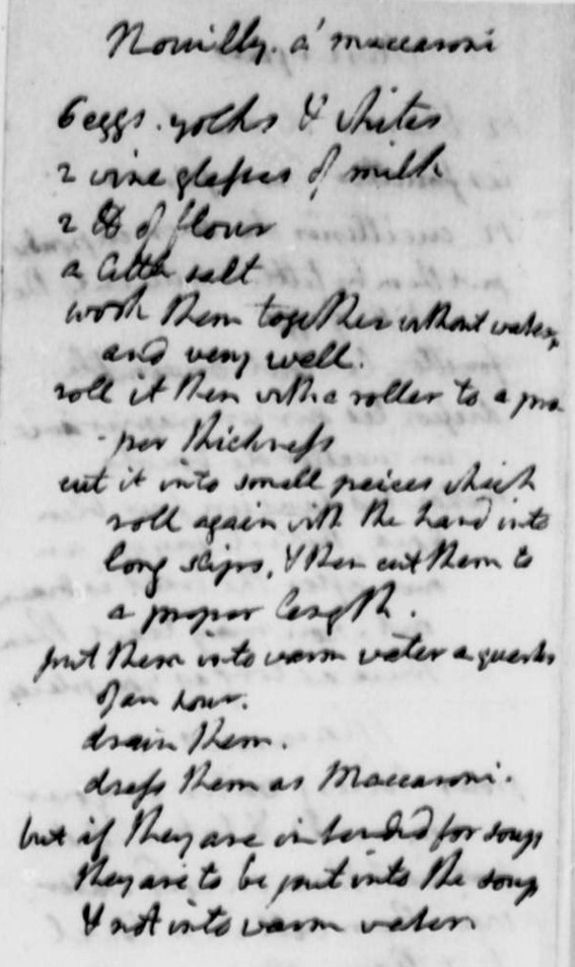
handwritten recipe (from Library of Congress), would have been even greater
had he insisted on using cheese from North Carolina.
In the 1780s when Jefferson was stationed in Paris as the minister to France and also traveled to northern Italy, he became fascinated with macaroni, a highly fashionable food. So captivated was Jefferson with European cuisine, his enslaved chef James Hemings (brother of paramour Sally) spent several years in France learning to prepare favorites of Jefferson, which included a baked macaroni dish.
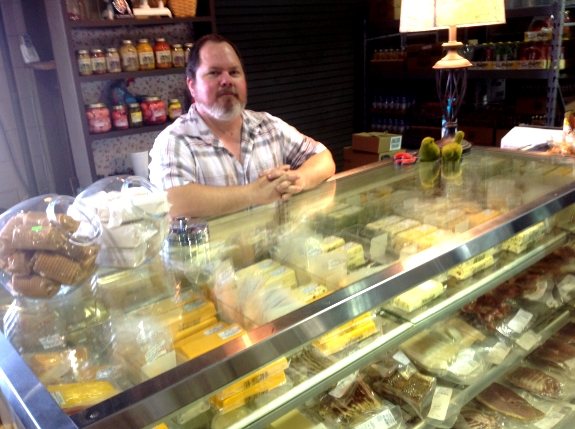
outlet at the State Farmers Market in Raleigh.
Even before Jefferson went to France, the wealthy elite in the North Carolina and other areas in the South likely would have appreciated macaroni and cheese if their libraries included The Experienced English Housekeeper, a 1769 book with the first modern recipe of macaroni and cheese. Later, after Jefferson’s assignment in France, when fellow planters traveled to Monticello and dined with him there, they might have raved about his baked macaroni. Think about how much more they would have raved if the cheese had been from the N.C. mountains. (Jefferson is known for importing cheese and macaroni from Marseilles for his use at Monticello, even after obtaining the pasta-making machine.)
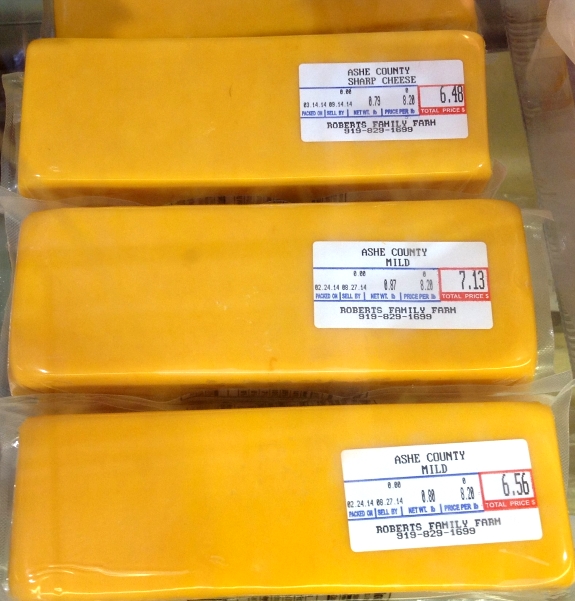
if he had used cheese from Ashe County?
In a major shift from Jefferson’s time, the key ingredient for great mac and cheese is no longer perfect macaroni or imported cheese. Observe how the scene is changing in our state. It doesn’t matter whether you’re in the mountains, piedmont, Sandhills, or coastal plains. More and more recently, the essential item is cheese from western North Carolina. Whether a main dish or a side, mac and cheese is often described on a menu as being made with Ashe County cheese.
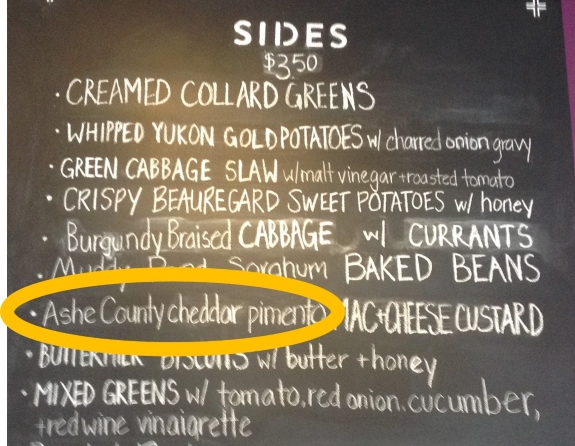
emphasizes Ashe County as the source of cheese in her restaurant
Beasley’s Chicken + Honey in Raleigh.
The status changes for mac and cheese have been phenomenal: from food of the wealthy elite in the 1800s to a meal extender during the Great Depression and now to trendy food of today as part of the rise and recognition of Southern cuisine. Chefs garnering statewide and national acclaim are insisting on using N.C. cheese, particularly that made in Ashe County, in their dishes, and they emphasize local connections to N.C. food producers in menus, ads, and displays.
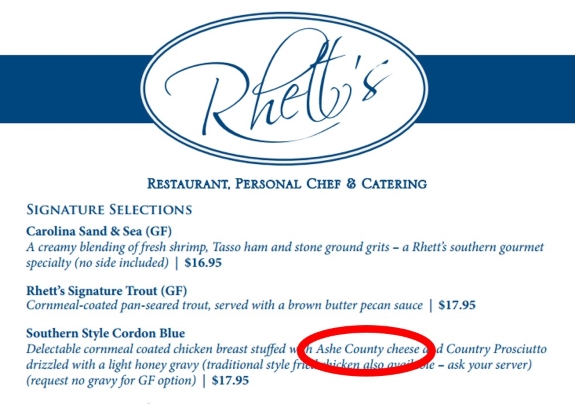
Series, uses Ashe County cheese to prepare cordon bleu in his
eponymous restaurant in Southern Pines.
What is it about macaroni and cheese that makes most of us smile? Is it a labor of love by someone dear? Or something special like cheese from western N.C.? For me, it’s walking into a restaurant and seeing Ashe County on the menu board as the source of cheese.
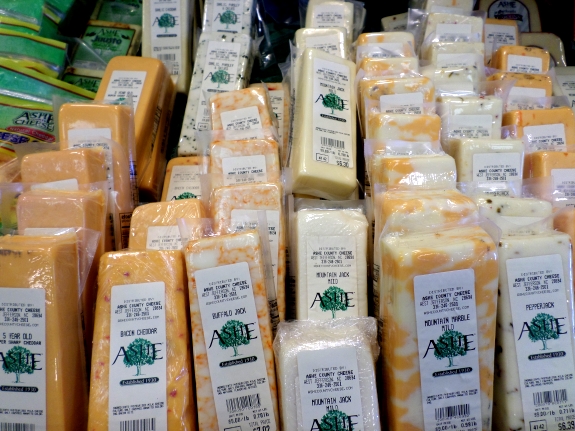
_______________________________________________________________
RESOURCES
Culinary Training of Chef Hemings
Got to Be NC Competition Dining Series
North Carolina Dairy Artisan Cheese
North Carolina Department of Agriculture and Consumer Services
North Carolina Specialty Foods
North Carolina Specialty Foods Association
North Carolina State Farmers Markets
Thomas Jefferson’s Baked Macaroni Recipe
…………………………………………………………………………
 Ray Linville writes and lectures on regional culture, including foodways and folklife. He has taught in the N.C. Community College System as a professor of English and humanities and served on the board of the N.C. Folklore Society. Read more about Ray’s ramblings at his blog: Sights, Sounds and Tastes of the American South.
Ray Linville writes and lectures on regional culture, including foodways and folklife. He has taught in the N.C. Community College System as a professor of English and humanities and served on the board of the N.C. Folklore Society. Read more about Ray’s ramblings at his blog: Sights, Sounds and Tastes of the American South.
Leave a Reply